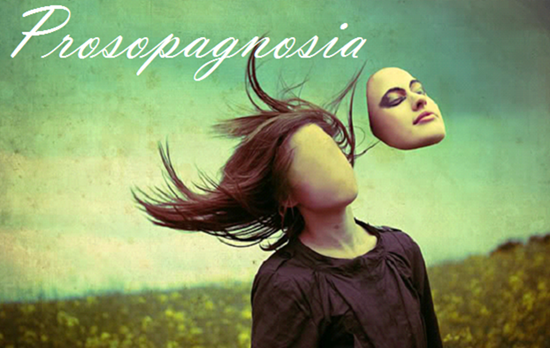
While modern medicine is borderline miraculous, there are a number of downright scary disorders that we’ve yet to find a cure for. Unlike other incurable diseases, such as the common cold, these conditions aren’t exactly easy to live with - many of them can even result in individuals being ostracized.
10. Berardinelli-Seip Congenital Lipodystrophy
Occurring in every one out of about 10 million births, Berardinelli-Seip congenital lipodystrophy (BSCL) is a condition marked by a severe lack of fat tissue in the body, with fats being stored in unlikely places around the body such as the liver and muscles. Because of these odd symptoms, patients with BSCL have a rather distinctive look and appear very muscular, almost superhero-like. They also tend to have prominent facial bones and enlarged genitalia.
In one of the two known types of BSCL, medical researchers have also found a mild to moderate intellectual disability - but that’s far from being the patients’ biggest concern. The highly unusual handling and depositing of fat leads to serious problems, such as high levels of fats circulating in the bloodstream and insulin resistance, while the accumulation of fats in the liver or heart can lead to severe damage of both organs and even sudden death. Apart from drugs normally used for patients with hyperglycemia, BSCL patients have to maintain a strict diet in order to keep their fat and carbohydrate intake to a minimum, while also avoiding total proteins and trans fats.
9. Leukodystrophies, or Benjamin Button Syndrome
A somewhat similar condition was depicted in F. Scott Fitzgerald’s “The Curious Case of Benjamin Button” and the subsequent movie adaptation, but the actual disease is quite a bit different, albeit just as scary. Because of an improper growth of myelin (the brain’s white matter) people suffering from leukodystrophies will experience a gradual decline in development, essentially going from a normal adult to having the thought process of a toddler.
Affecting about one in a few thousand individuals, most cases of leukodystrophies are genetic in nature and also share a number of common features with the less rare multiple sclerosis, which is also caused by the loss of white matter from the brain. The more disturbing types of leukodystrophies are not inherited but may arise spontaneously, even after the individual in question has been living a normal and healthy life into adulthood. Around forty rare genetic disorders comprise leukodystrophies, all of them having mostly similar symptoms. Treatment is usually limited to symptom management.
8. RPI Deficiency, the World’s Rarest Disease
With a single patient suffering from it in all known history, RPI deficiency may well be the rarest disease in the world, although it shares a number of similarities with the aforementioned leukodystrophies. Caused by a low production of the Ribose 5 Phosphate Isomerase (RPI) enzyme, which is pretty much in charge of your body’s metabolism, the disorder consists of a number of mutations and a range of symptoms that aren’t found together in any other disease.
The only known patient to have it was born in 1984 and over the years developed psychomotor retardation, epilepsy, optic atrophy and extensive abnormalities of his brain’s white matter. Despite extensive investigations and research over the years, physicians are yet to either find a cure or even give a prognosis, especially since no other patient is known to exist on the planet.
7. Lesch–Nyhan Syndrome, or Self-Cannibalism
Affecting one in over 300,000 individuals, Lesch-Nyhan syndrome (LNS) is a rare disorder which is also caused by a deficiency of a metabolism enzyme, but with a different and horrifying symptom. Apart from delayed overall growth, nervous system impairment, testicular atrophy, kidney damage and sometimes acute inflammatory arthritis, most LNS patients tend to injure themselves via biting. Without outside help some of them can go as far as literally biting themselves to death, which is why most LNS patients are kept in restraints for most of their short lives. There are even some cases in which their front teeth are extracted in order to keep them from biting themselves.
Despite this atrocious symptom, LNS usually kills via kidney failure, and patients have a two decade prognosis at best. The treatment is either symptomatic or experimental, with no full-on cure existing at the moment. The only good news about the disease is the fact that women are mostly devoid of symptoms and are just carriers.
6. Moebius Syndrome
The rare Moebius syndrome is characterized by complete facial paralysis. It seems that only up to 20 individuals in 20 million births suffer from this congenital neurological disorder, and those who do may also exhibit limb abnormalities (such as missing fingers) and corneal erosion because of their limited ability to blink.
Since facial expressions and smiles are an important part of social interaction, Moebius syndrome patients are erroneously stereotyped as being mentally impaired because of their motionless face and frequent drooling. Most cases don’t appear to be genetic and usually happen after traumatic pregnancies or after the use of certain drugs by the mother, such as cocaine or abortion inducing substances. While therapy can improve motor skills and coordination over the years, and eye drops can battle the implications of impaired blinking, the only so-called cure for the lack of facial expressions is via smile reconstruction surgery.
5. Prosopagnosia, or Face Blindness
Prosopagnosic people are probably the most misunderstood people on this list, and that’s because their condition is hard to grasp from the outside. In short, people with prosopagnosia find it difficult or downright impossible to remember faces, even their own. Some go as far as making funny faces when standing in front of a mirror in a crowded restroom just so they can see which ones they are. They’re not technically face blind, as they can detect faces as clearly as any other human, but their brains can’t memorize what they see.
While you would think the biggest problem with this condition would be following a movie plot, the sadder truth is the fact that most prosopagnosics are ostracized by people who are offended that they aren’t recognized. Since there’s no long-lasting therapy that can work with this disorder, most patients learn to cope with prosopagnosia by using audio and other visual clues to recognize friends, family and co-workers.
4. Fibrodysplasia Ossificans Progresiva, or Stone Man Syndrome
Yet another cruel genetic disease, fybrodysplasia ossificans progressiva (FOP) is an odd condition in which most or even all of a person’s muscle tissue, tendons and ligaments become ossified over time. The only moving body parts that don’t turn into bone are the cardiac muscle, the diaphragm, the tongue, the extra-ocular muscles and smooth muscle tissue, essentially transforming the person into a living statue.
Since the extra bones appearing on the body of a FOP patient are formed across joints it can severely restrict movement down to the inability to fully open their mouths, thus causing difficulty in speaking and eating. If that doesn’t sound bad enough, any physical trauma - including attempts to surgically remove the extra bone - are bound to trigger muscle swelling in the area, which in turn may cause more bone growth. While rather gruesome in both appearance and consequences, FOP is very rare, with the condition occurring in about one in two million new-borns and only a few hundred cases having been confirmed by modern medicine.
3. Harlequin-type Ichthyosis
Harlequin-type ichthyosis is a genetic disorder that affects just the skin of the patient, albeit in a unique and macabre way. Babies born with this condition have very hard and thick skin that forms large, diamond-shaped plates separated by deep fissures. The shape of the eyes, nose, mouth and ears are also distinctive.
While extremely rare, harlequin-type ichthyosis has been known since at least the mid-18th century, when a case was described in the diary of a cleric from South Carolina. Until just a few years ago the condition was almost always fatal, since the characteristics of the patients’ skin makes them highly susceptible to infections and dehydration, and also make it hard to regulate body temperature or breathe properly. With recent medical improvements the number of survivors of this severe disorder is steadily increasing, but there’s still no absolute cure for it.
2. Visual Release Hallucinations, or Charles Bonnet Syndrome
Although it appears in people who are otherwise mentally healthy, Charles Bonnet syndrome (CBS) can probably make someone feel like they’re crazy or constantly drugged. In short, patients with CBS can experience rather vivid and complex visual hallucinations, despite the fact that all of them suffer from partial or severe visual impairment due to old age or certain diseases such as diabetes or glaucoma. Obviously, seeing things that couldn’t possibly be there, such as mythological creatures or cartoon characters, does little to improve the mental condition of sufferers, especially since most fear they may have a brain-related disease such as Alzheimer’s or Parkinson’s.
Even though there’s a rather high rate of non-reporting of this disorder, it appears that it has a high prevalence among older adults that have started experiencing significant blindness, with certain studies reporting anywhere between 10 and 40 percent of nearly blind and old patients suffer from CBS. Fortunately, unlike the other conditions on this list, CBS symptoms will simply disappear on their own after one or two years at most, or once the brain has started to adjust to the patient’s loss of vision.
1. Cyclic Vomiting Syndrome
Cyclic vomiting syndrome (CVS) is a medical condition that’s bound to completely disrupt the normal life of any otherwise health individual, as its symptoms mainly consist of intense and recurring attacks of nausea and vomiting for no apparent reason. Corroborated with headaches and abdominal pain, the life-disrupting episodes can take hours or even several days, with the sufferers sometimes requiring medical treatment in the ER.
Because of the severe and cyclic nature of nausea and vomiting attacks, CVS patients have a much higher chance of developing a number of other medical complications, such as dehydration, inflammation of the esophagus, tooth decay and even a life-threatening tear of the esophagus. While there’s no known remedy for CVS, there are a number of treatments which may stop or prevent a vomiting attack, or relieve associated symptoms. Currently, it’s known that about three in 100,000 births are diagnosed with the condition, and it seems that even Charles Darwin may have suffered from it.

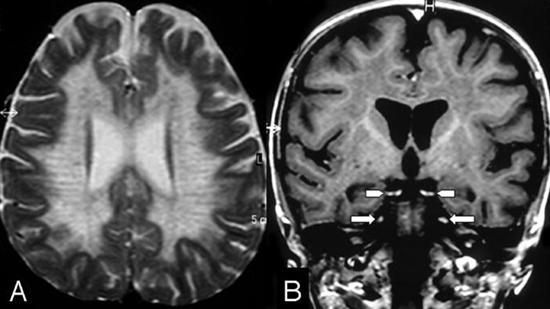
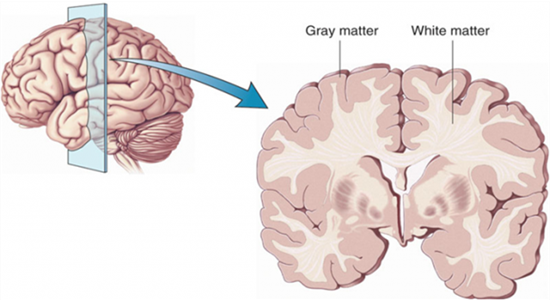
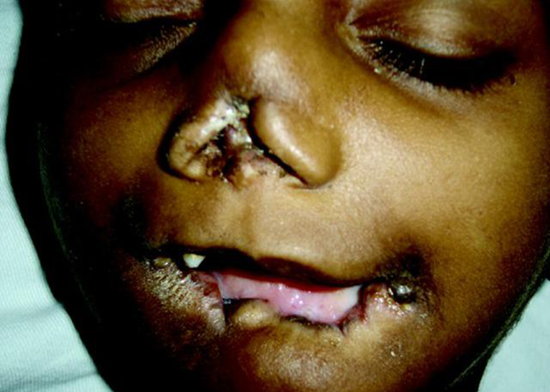


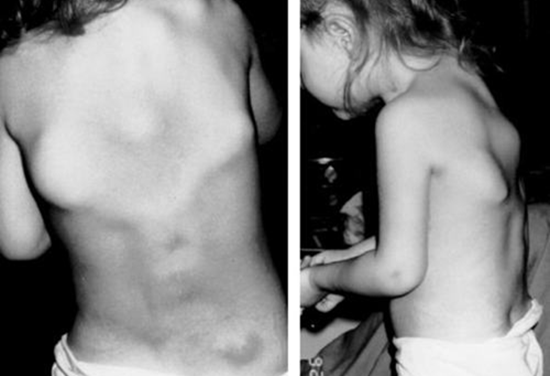
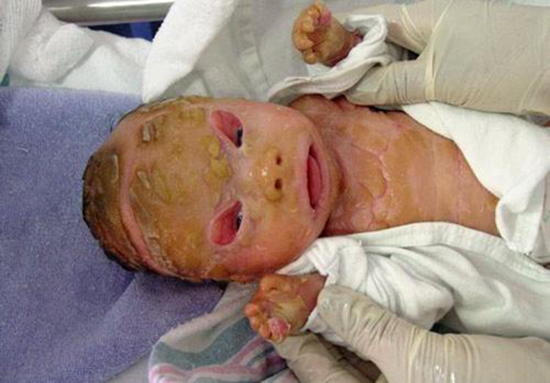

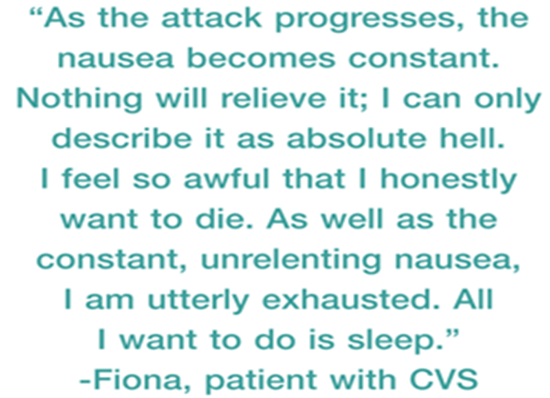
No comments:
Post a Comment
Please adhere to proper blog etiquette when posting your comments. This blog owner will exercise his absolution discretion in allowing or rejecting any comments that are deemed seditious, defamatory, libelous, racist, vulgar, insulting, and other remarks that exhibit similar characteristics. If you insist on using anonymous comments, please write your name or other IDs at the end of your message.